Cristina Cuomo Is Immune to Your Criticism
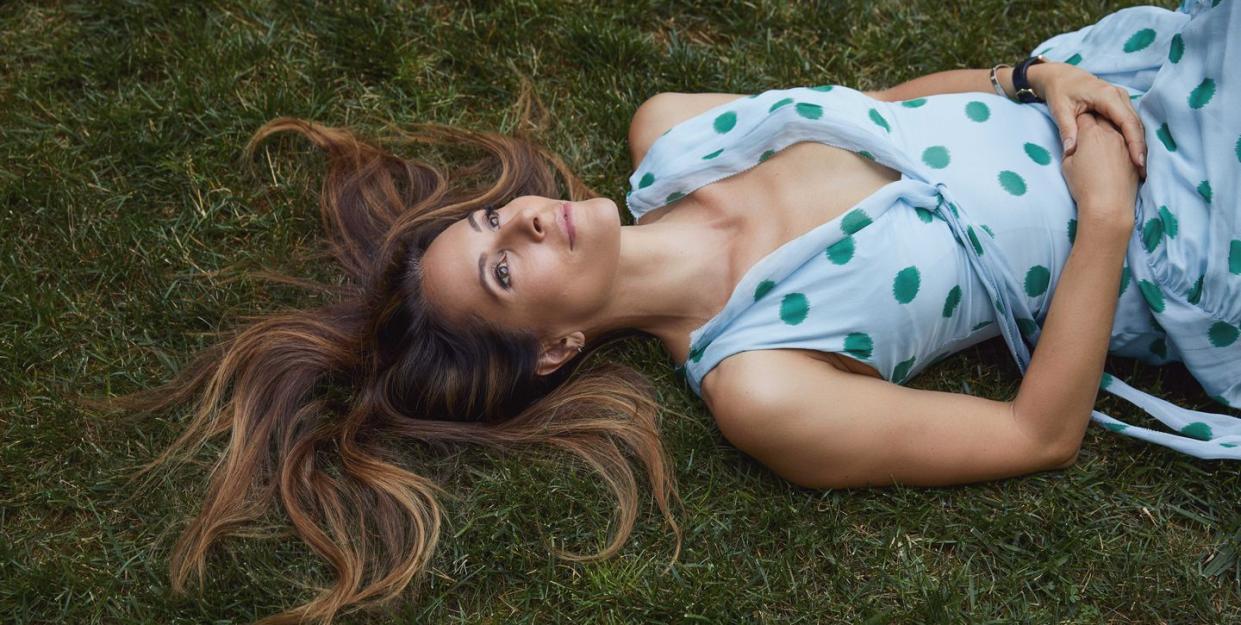
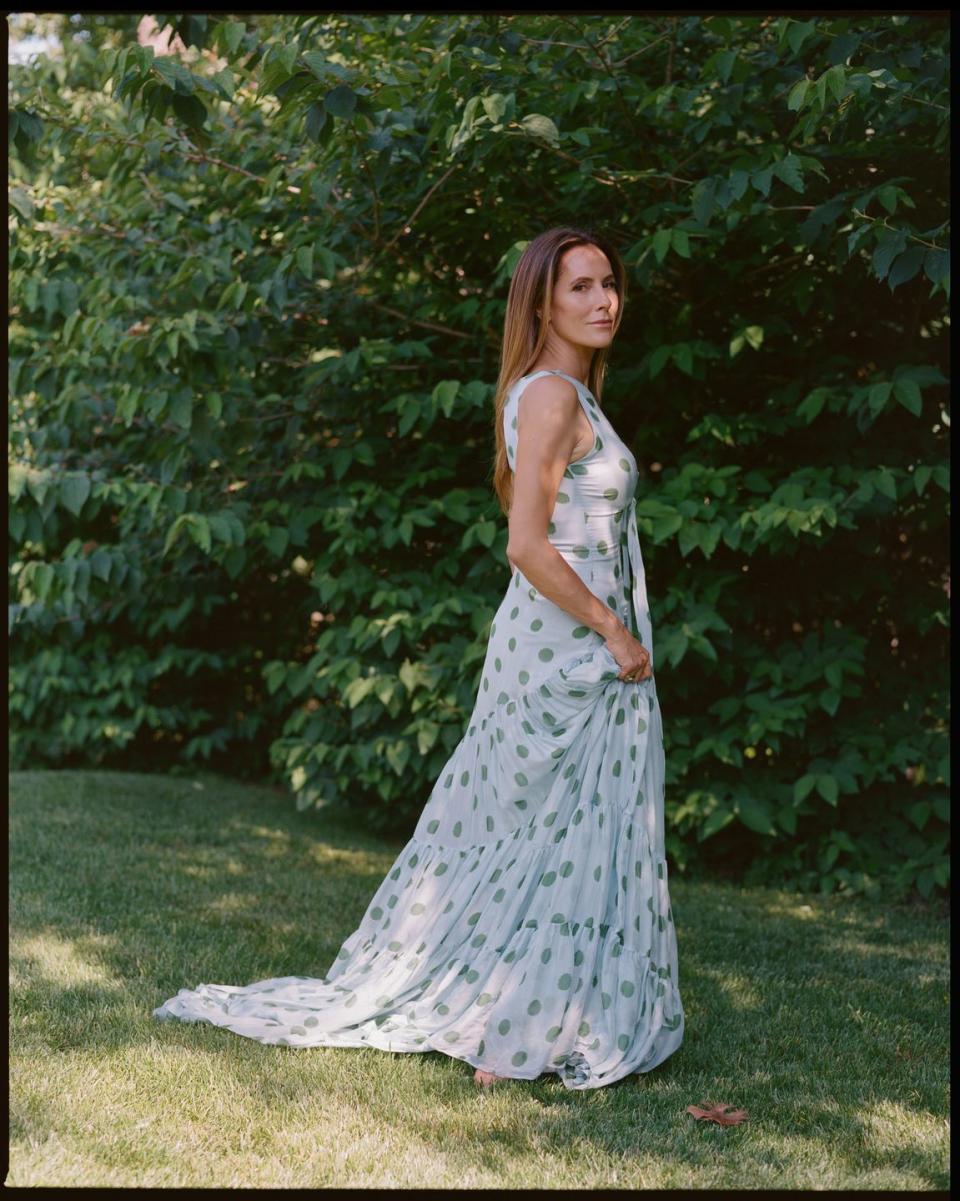
While other New Yorkers spent their summers in a state of cautious misery, strapping on face masks and judiciously avoiding fellow pedestrians like they were living in a never-ending game of “Frogger,” Cristina Cuomo was enjoying the kind of carefree season that most non-immunized mortals could only experience by scrolling through old photos. The day before Fourth of July, I found her swanning about her minimalist East Hampton rental home in a white linen jumpsuit with impunity, greeting her kids’ friends and generally socializing with ease. It’s here that she quarantined since late March with her husband Chris, the CNN host, and their three children. Since she recovered from COVID-19 this spring, she’s been a bit like the only tipsy person at a party full of teetotalers.
“When people come in my house, I leave it up to them whether they want to wear a mask or not,” she tells me, showing off a mask branded with her husband’s favorite saying: “Let’s get after it!” The mask, these days, wards off social judgment more than disease for Cristina. “There’s two schools of thought. The first is: Okay, you’ve had coronavirus. You’re the most popular person in the room,” she explains. “But then there’s the people who don’t really understand what’s going on. To them, it’s a scarlet letter. Oh, you’ve had the virus? Stay away from me. I didn’t expect that,” she says. Such thinking speaks to the vast cloud of confusion around infection and antibodies. Even Cristina is not fully in the clear: After her recovery, she tested positive, then negative, then positive again for COVID antibodies. Still, among the 30 million reported COVID cases globally, there have been only six documented case of reinfection—which suggests Cristina is, in all likelihood, safe to live her life like an immune person. “No one really knows anything,” she says.

This spring, Cristina and Chris Cuomo became some of the most prominent public figures to test positive for COVID-19 during its harrowing early days. They documented their journey through the symptoms of the perplexing virus—Chris during his nightly CNN broadcast, Cristina through her wellness publication, Purist—with gusto. Given their platforms, and their association with Chris’s brother, New York Governor Andrew Cuomo—a COVID celebrity if there ever was one—they became poster children for the virus. But now, several months removed from her last symptoms, the 50-year-old Cristina Cuomo is more like the antibody queen: The woman who got COVID, tried every remedy under the sun to treat her symptoms, and emerged triumphant.
Well, triumphant, but also with a newfound reputation as somewhat of a wellness kook and a not-always-flattering new spotlight. Before COVID, Cristina was a tertiary figure in the Cuomo political universe. She, like many other meticulously preserved women with significant financial resources, had been pursuing a career in the wellness industry. In 2017, she launched Hamptons Purist—now shortened to just Purist—a print magazine about wellbeing geared toward the upper-crust summer party circuit, filled with insight from bold-faced names, among them Jerry Seinfeld, Arianna Huffington, and Julianne Moore. “Make the things you let into your body, mind and spirit matter,” Cristina wrote in her first letter to her audience. “Let Purist be your guide.”
It’s one thing to guide readers through their first turmeric shot or recommend yoga studios; it’s a wholly different thing to advise them how to prevent or treat the symptoms of a virus with unknown ramifications during a global pandemic, especially when the virus continues to surprise and baffle even the most expert scientists. In April, when Cristina noted in one of her detailed online COVID diaries that she’d taken a diluted bleach bath, at the recommendation of one of her many doctors and holistic healers, she went from harmless wellness fanatic to full-fledged quack in the eyes of the internet. It didn’t help that her post was published that same week that President Donald Trump seemed to suggest Americans could use disinfectant via “injection inside [the body] or almost a cleaning” to kill the virus in “one minute.”
Overnight, Cristina was branded as the woman who, like our catastrophically ill-informed president, was telling people that bleach was the cure for COVID. This earned her a spot in the tabloid ecosystem, where articles analyzed screenshots of her husband skinny-dipping in the background of one of her Instagram Live sessions, and scrutinized her for doing yoga without a mask. (“People have been known to skinny-dip in this house, and I don’t think Chris realized I was on Instagram Live,” Cristina tells me.) If only there were an antibody for clickbait. She quickly solicited the services of a publicist.
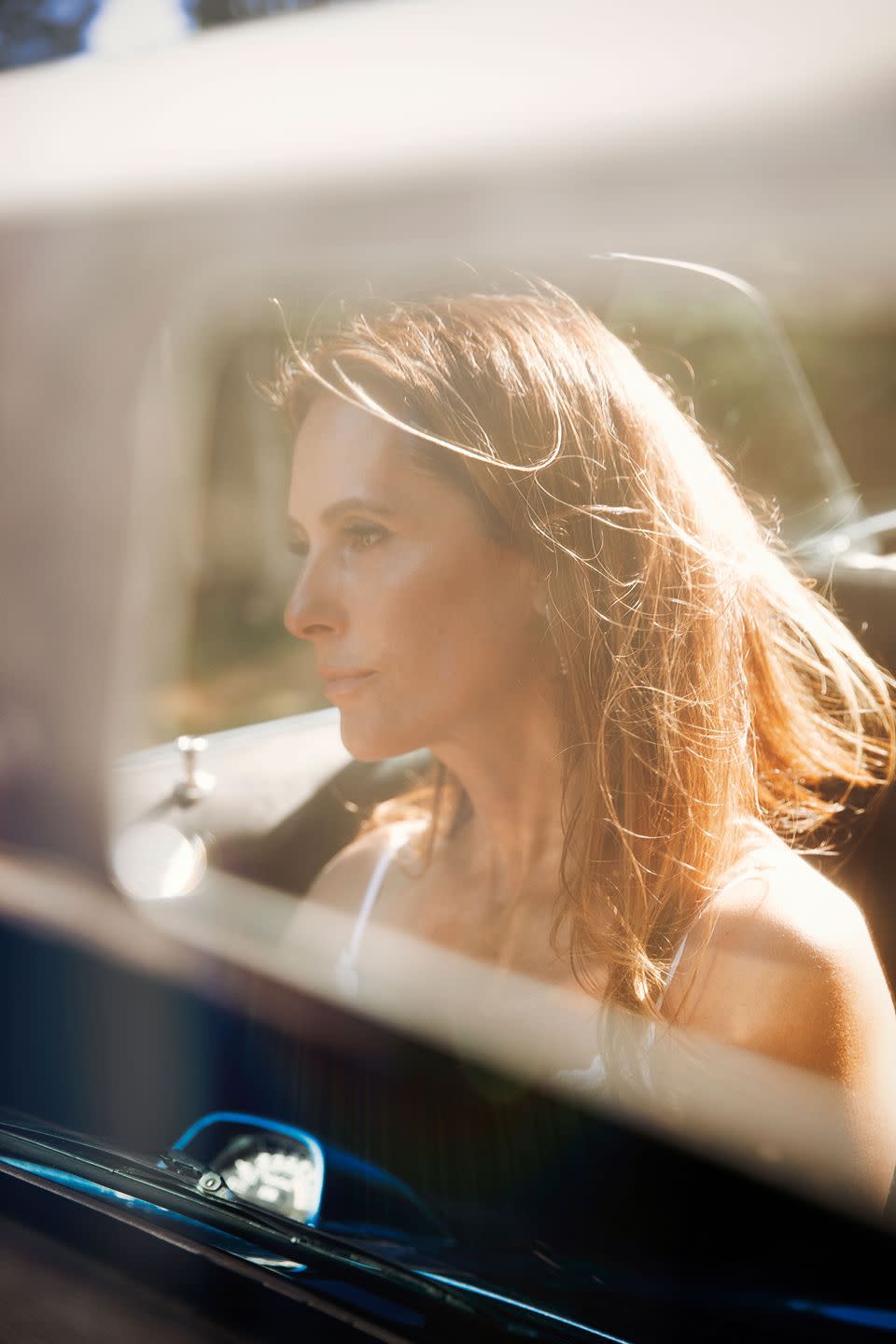
Before COVID, Cristina’s pursuits seemed virtuous enough. The pursuit of self-optimization—looking better, feeling better, shopping better—has become one of our most beloved national pastimes. But COVID has prompted a reckoning within the wellness space, underscoring how difficult it can be to find the line between helpful advice, expertise, and charlatanism. With her untimely bleach-bath recommendation, Cristina now seemed to fall in the camp of not just charlatans, but wealthy, out-of-touch celebrities. Suddenly her brand of wellness advice—one centered around expensive and outlandish treatments, alternative-medicine practitioners, and an array of obscure homeopathic remedies—felt absurd, toxic even. Could she find a remedy for her public image?
Cristina has been in the semi-public sphere for over 21 years, since she met her husband. A New York City native born to a Brazilian mother and a German father, she grew up seeing Mario Cuomo, her husband’s late father and New York political stalwart, in the news. She and Chris met at an art opening in 1998, when Cristina, a Cornell graduate, was working as the editor of Manhattan File magazine in the city. “[The Cuomos] are all very driven and, you know, doing things that really go above and beyond community service,” she remembers. “So I met Chris and instantly was enamored with his whole civic mindedness.” They fell in love, got married, and had three children, each with a name evoking the image of Italian American royalty: Bella, Mario Jr., and Carolina.
Cristina continued to work in publishing, heading up Manhattan and Beach, two glossies owned by a larger imprint targeted toward high-income consumers, called Modern Luxury. Working in a niche publishing sphere aimed at celebrity and celebrity-adjacent audience for more than two decades, she became intimately familiar with the desires of the Hamptons and Aspen crowds. And like her, these crowds desperately want to slow their march toward old age and maximize their years spent on earth.
As Cristina grew older, she, too, found an intensifying interest in her own wellbeing. Like many women, she became increasingly conscious of the way certain behaviors or consumptions habits seemed to impact the way she felt and the way she looked. “When you turn 40, it’s a momentous occasion,” she says. “They say the body you have at 40 is the body you can keep forever, with proper maintenance. So what does that mean, Cristina? Am I eating well enough? Am I sleeping properly? How are my stress levels?”
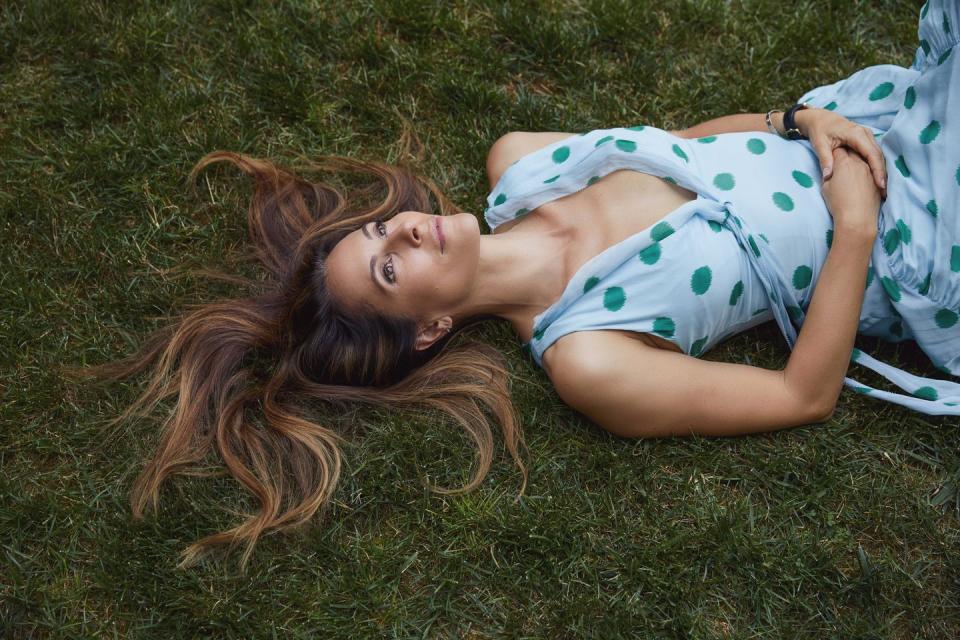
Languidly sprawled on her living room floor, flanked by her two gentle Labradors, her children cannon-balling into the pool outside, Cristina’s stressors seem blissfully low at the moment. She tells me the story of surfing for the first time in her late 30s, and thinking: Holy shit. I’m standing on a board and I’m flying. It was the best feeling in the world. She wanted to feel like that all the time, and she saw the world of wellness as her entryway.
Curiously enough, it was only after she began seriously focusing on her health that Cristina began to suspect she might be unwell. At 43, she started feeling unusually tired, growing sluggish at her desk at 4 p.m. every day. Her general practitioner ran some tests and told her she was fine. But like any burgeoning wellness connoisseur, she wasn’t quite satisfied with this answer. She embarked on an epic journey to locate an illness behind the seemingly ordinary symptoms of modern human life.
The more she found was wrong with her, the more she found was wrong with her. A nutritionist suggested she hadn’t treated a concussion she had at age seven that had caused her a lifetime of headaches. (“The mistake is, you altered the blood flow to your brain,” she was told.) She got a cranial sacral therapy to relieve bone compression in the head and spine to treat it. More blood tests revealed she had an active case of Epstein-Barr, the root illness that causes mono. She cleaned up her diet and began to feel better. (COVID-19 also reactivated the Epstein-Barr, she would eventually learn.) More testing after an interminable sinus infection revealed she had chronic Lyme, likely from childhood tick bites. “I’ve said, I’d rather have coronavirus than Lyme. I believe now that with mystery indications, generally, you should check for Lyme,” Cristina explains. “Get a blood test. Why not?”
There’s nothing self-appointed wellness enthusiasts love more than mystery symptoms, which is why COVID has caused such a spectacular frenzy in the wellness and wellness-adjacent universes. Is COVID a lung disease or a blood disease? If my temperature was 98.6 this morning but now it’s 99.1, am I symptomatic? Is this bug bite on my foot an example of COVID toe? If my sister in law got a negative test result four days ago but has since gone grocery shopping, can I still hang out with her? Will Advil kill me or save me?
With many questions and so few answers, people working in the wellness space—from yoga teachers to naturopaths and energy healers—have stepped in to fill the void with their hypotheses and recommendations. It started innocently enough, with health-minded entities promoting well-known immune boosters like vitamin C and zinc, as well as techniques to soothe anxiety. Amanda Chantal Bacon, the proprietor of sexy new-age potion brand Moon Juice, advised her Instagram followers to avoid “sugar, fighting, alcohol, fear, processed foods, isolation and stagnation.” (And, of course, to try out her Moon Juice products, like a $49 bottle, of SuperYou stress management supplements, the purported benefits of which have not been evaluated by the FDA, according to the fine print.)
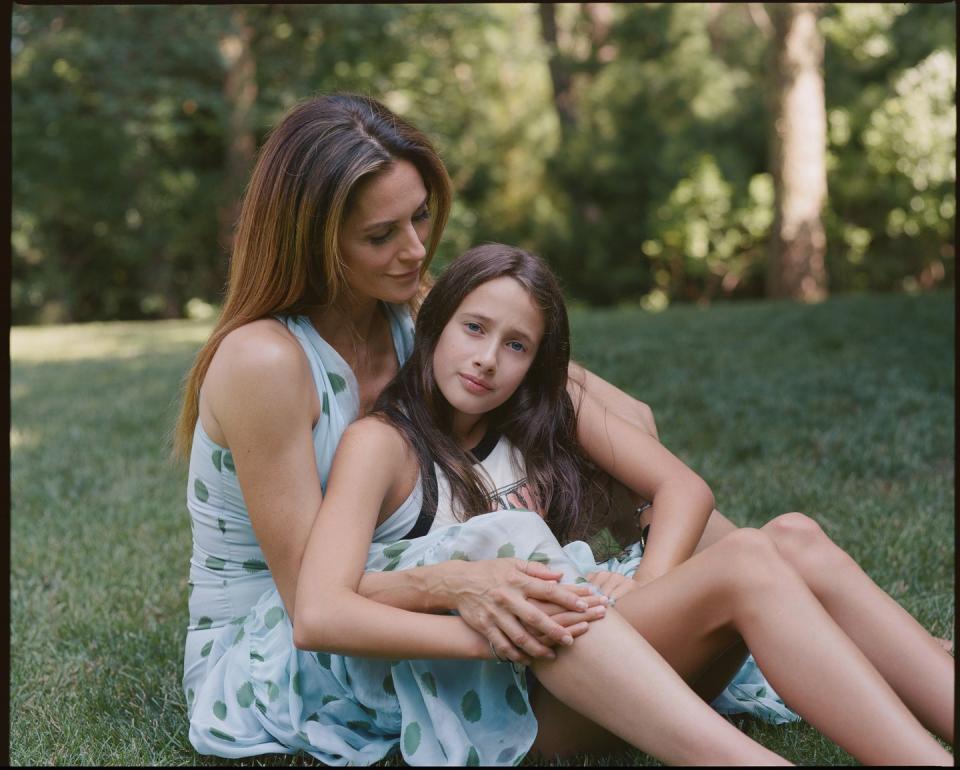
Soon, though, the armchair COVID suggestions began spilling into unlikely places and spinning out of control. The notorious Sandy Hook conspiracy theorist and InfoWars figurehead Alex Jones started hawking bogus COVID treatments like “Superblue Silver Immune Gargle” on his website, earning him a letter from the FDA telling him to remove various products, including the gargle, from his website. Dr. Stella Immanuel, a doctor with a history of linking gynecological conditions to sex with demons in your dreams, started pushing the contentious anti-malaria drug hydroxychloroquine as a COVID cure. (Trump, who has been pushing hydroxychloroquine as well, even though it has been proven not only ineffective but potentially deadly, described her as “very impressive.”) One woman even filmed a video claiming that drinking semen could help battle the virus; it racked up 100,000 views. Given the glut of outrageous and unreliable medical advice circulating, social media platforms like Facebook, YouTube, and Twitter began aggressively monitoring and flagging posts pushing harmful information. The viral video featuring Dr. Immanuel, for example, was removed from major platforms. In early August, Facebook announced it had removed over seven million posts containing misinformation related to COVID between April and June alone.
When Cristina found out she and her husband were positive, she instantly transformed herself into the Nancy Drew of COVID-19. “I was researching like crazy–talking to Dr. Linda [Lancaster], Tapp Francke, [the founder of STANDwellness, an alternative and holistic health center in Water Mill, NY], all of these MDs. I was Nervous Nellie,” she remembers. One of her go-tos, Dr. Linda Lancaster, an “Energy Medicine physician” drafted a protocol for Chris Cuomo’s COVID recovery. Lancaster is a typical doctor for Cristina: a practitioner whose eccentric-sounding practices (like using “vibrational fields” and “subtle energy healing”) are counterbalanced by endorsements from members of the Hollywood elite like Robert Redford and Miranda Kerr.
I ask Cristina if, given her proximity to official advice by way of Governor Cuomo, she ever had access to an inside track—early discoveries about treatments, information about testing and school closures. “I’m not one of those annoying sisters-in-law who is texting him and saying, ‘Tell me something I’m not seeing on the news!’” she explains. “So if there is something to know in advance, everyone pretty much knows it in real time these days. And because COVID is such an unknown virus, they really are dealing with this for the first time in our lifetime.”
In an effort to gain a sense of control over the situation, and to share her findings with Purist readers, Cuomo began publishing in-depth weekly blogs documenting her symptoms and the corresponding treatments she and her family were experimenting with, most of which purported to be immune boosting. She warned readers to consult a doctor or naturopath before taking any of her advice. But she also encouraged them to suspend their disbelief, writing in one post: “If you think these are far-fetched treatments, as I once did, think again.”
By week three of her journey with COVID-19, Cristina and her family were experimenting with a massive array of supplements and practices to increase their immunity and ease their symptoms. Some of it was obvious: A good night’s sleep was important, she stressed. So were breathing exercises. The family ate mostly Ayurvedic foods like chickpeas, spinach and chutneys during their COVID journey to improve digestion and “nourish,” and drank plenty of lemon-ginger tea. Cristina also recommended a potion she described as “liver-cleansing,” a blend of garlic, orange, lemon, cayenne pepper, olive oil, ginger, and turmeric. And then there were standard vitamins, like vitamin B, vitamin D, and zinc. There were also more obscure homeopathic remedies, like medicinal florals called xanthium and magnolia to ease sinus congestion. And then there were even more outlandish or inaccessible protocols she followed: A doctor visited her home wearing a hazmat suit to administer a vitamin C drip, which she said helped alleviate sinus pain. She also used a spirometer, an inexpensive device that helps regulate airflow into the lungs.
Nestled in her list of treatments was something Cristina described as a type of homeopathic bath recommended to her by Dr. Lancaster, “a water-and-dilute [sic] sodium hypochlorite bath (commonly referred to as a water-and-bleach bath), to combat the radiation and pollutants in my system and oxygenate it.” Lancaster reasoned that since COVID-19 is an oxygen-depleting virus, the bath would help oxygenate her skin and relieve inflammation. The result: “After [the] recommended 20 minutes, my skin was a little flushed (I did not submerge my shoulders, neck or head), and I felt relaxed and tired,” Cristina wrote. “I rinsed off with a cool shower. I experienced no negative side effects. I found it soothing for my skin.”
A bleach bath, oddly enough, is one of the cheapest, most common and most widely accepted treatments Cristina has cited on Purist, although not for viruses like COVID. Many reputed medical bodies—like the Mayo Clinic and National Institutes of Health—have recommended it over the years as a mild and effective remedy for some inflammatory skin conditions. It won’t treat a virus, but it might soothe the skin. It was another thing she was willing to try just to feel better, in some way, while dealing with the virus. Had she suggested a bleach bath at any other moment, it’s unlikely anyone would have batted an eyelash. Then, Trump gave his galling bleach endorsement. “The media was just like, ‘Oh, this bleach bath thing is going gangbusters! Chris Cuomo’s wife is recommending it,’” Cristina remembers, aghast. “A) it’s mostly politically motivated journalists. And B), it’s all about bait, click.”
Chris Cuomo has also drawn plenty of attention in recent months, thanks to his COVID diagnosis and his brother Andrew’s heightened profile, along with the brothers playful, meme-worthy public sparring on Chris’s CNN show. It hasn’t always been positive. One afternoon, at the end of Chris’s COVID recovery, the family went to watch the sunset at their under-construction property near Sag Harbor. (They had moved out of their old Southampton home, which was a publicly listed address, in 2018 after a series of uninvited ill-willed visitors, Cristina says.) As the sun set, the family noticed a man on a bike leering at them from the adjacent property. “He was yelling at us, telling us we were supposed to be in quarantine,” Cristina says. “We’re on our land. A little bit of land that we’re socially distanced on. Creepy guy ends up in the Post the next day and says, 'Chris Cuomo tried to bully me.'”
“People are so disturbed that it’s beyond frustrating,” she continues. “Of course, Chris never talked about it. He didn’t want to give any power to this ridiculousness.” (Chris did end up addressing the incident on his SiriusXM show, saying that, “I don’t want some jackass, loser, fat-tire biker being able to pull over and get in my space and talk bullshit to me, I don’t want to hear it.”)
I ask Cristina what her husband thinks about her adventures in wellness, and whether he’s a true convert. She laughs. “I don’t know, you’ll have to ask him that!” she says. “I would say that he believes in the things that he sees to be efficacious.” When I do ask him, via email a few weeks later, he carefully circles around the question. “Cristina is guileless,” he writes. “That is very rare these days. She has no hidden agenda. She doesn’t play people. What she wants most often is to help people be more healthy; better lifestyles; happier kids, more content spirits. And she wants the kids and me to feel more loved and supported. And we do.”
Cristina, like other legally savvy wellness professionals, gives Purist readers frequent disclaimers. Advice is often hedged with the perfunctory suggestion to consult a credentialed doctor before experimenting with self-prescribed alternative remedies. But at the heart of Purist, and many like-minded outlets, is a fundamental skepticism of traditional medicine. It’s a highly stylized rejection of stodgy old-school physicians who they view as more invested in following protocols, writing prescriptions, and avoiding lawsuits than in acknowledging a patient’s pain. The universe of wellness offers a tantalizing alternative to the slog of the doctor’s office, validating its acolytes’ every concern and offering a buffet of potential remedies.
The pursuit of some nebulous sense of “feeling better,” then, becomes a satisfying consumerist self-study: If one supplement or practice doesn’t work, there are thousands more to be ordered online, often for less money and less time than visiting a doctor. It plays to our vanity and our aspirational yearnings, too. It’s easy to scoff at kooky remedies proffered by known conspiracy theorists. But when similar treatments are doled out by individuals we want to look like or be like—say, the glamorous, tanned, Ivy League-educated wife of a prominent television star—it takes on a seductive air of legitimacy.
This becomes especially appealing in the age of COVID, when our medical experts are themselves grasping for clarity. At best, substituting “wellness” for medical expertise can be a gratifying exercise in self-soothing. At worst, it can be a dangerous, psychologically draining, and expensive trip down the rabbit hole of self-remedy. For Cristina’s part, she insists that with COVID, she was doing what she’s always done: Not claiming to know a cure, but experimenting with tools to ease symptoms and just make people, on any level, feel better. “People care about health and wellness now,” she says. “We know that if we are our healthiest selves, our immune resilience is stronger, and we can fight against potential illness in a more effective way. What we do is say, ‘Here are some effective tools to keep your immune strength up.’”
“I think that people might judge me and say, 'Oh, she’s so privileged. There’s a lot of hate out there,” she says. “But I kept a diary. I’m a writer. I’m a journalist. I have fact checkers! I have copy editors! I have researchers! People who are around me. I’m not just some blogger. Everything I did, every test my family took, I write down.”
Even though COVID has brought some unwanted attention to Cristina, quarantine has been good for her lifestyle. She’s been doing yoga multiple times a week, meditating frequently, and turning her Instagram—where her followers have quadrupled—into a kind of digital watering hole for alternative medicine aficionados. “I personally like being home all day,” she tells me. “I like those moments of quiet and… Oh, wow,” she says, glancing down at her buzzing phone. It’s a notification, alerting her that it’s time for her meditation on Instagram Live. A coach named Donna D’Cruz is waiting for her. “I totally forgot about this,” she says. “This is the story of my life. I’m always late and totally irresponsible. Do you want to do it?” I sincerely do.
“Hi Donna! I’m sorry I’m late, I got carried away today with being more social than usual,” Cristina says.
“Did you feel good about seeing people today?” Donna asks her.
“Yes, of course,” Cristina says. “It stimulates the frontal lobe, or whatever they say. I actually really appreciated it.”
We begin our meditation, and Cristina realizes her phone is about to die. As D’Cruz guides us through a “liberation” meditation—which is genuinely calming—Cristina rummages through her living room, finally plugging herself back in. As we sit in silence, the dogs erupt in barking fits, her son arrives home, the kids are screaming by the pool. “That was liberating,” Cristina says when the session wraps. “I think your intention worked. And I apologize for all the loud distractions. But it really shows your ability to, um, meditate, when you’re unfazed by the dog barking and children’s loud elation.”
If all this meditation hasn’t exactly turned the Cuomo compound into a place of peace and organization, it seems it has imbued Cristina with an ability to brush things off. She has a mostly amused attitude toward the bleach-bath debacle. “Actually,” she confesses with a mischievous smile, “It was the only science-backed thing I wrote about.” Never mind that the science doesn’t link it to the virus.
“No one really knows anything,” Cristina says. Until they do, she’ll be among the seekers.
Cuomo was photographed at home in the Hamptons in July. Makeup by Karina Montoya.
You Might Also Like


